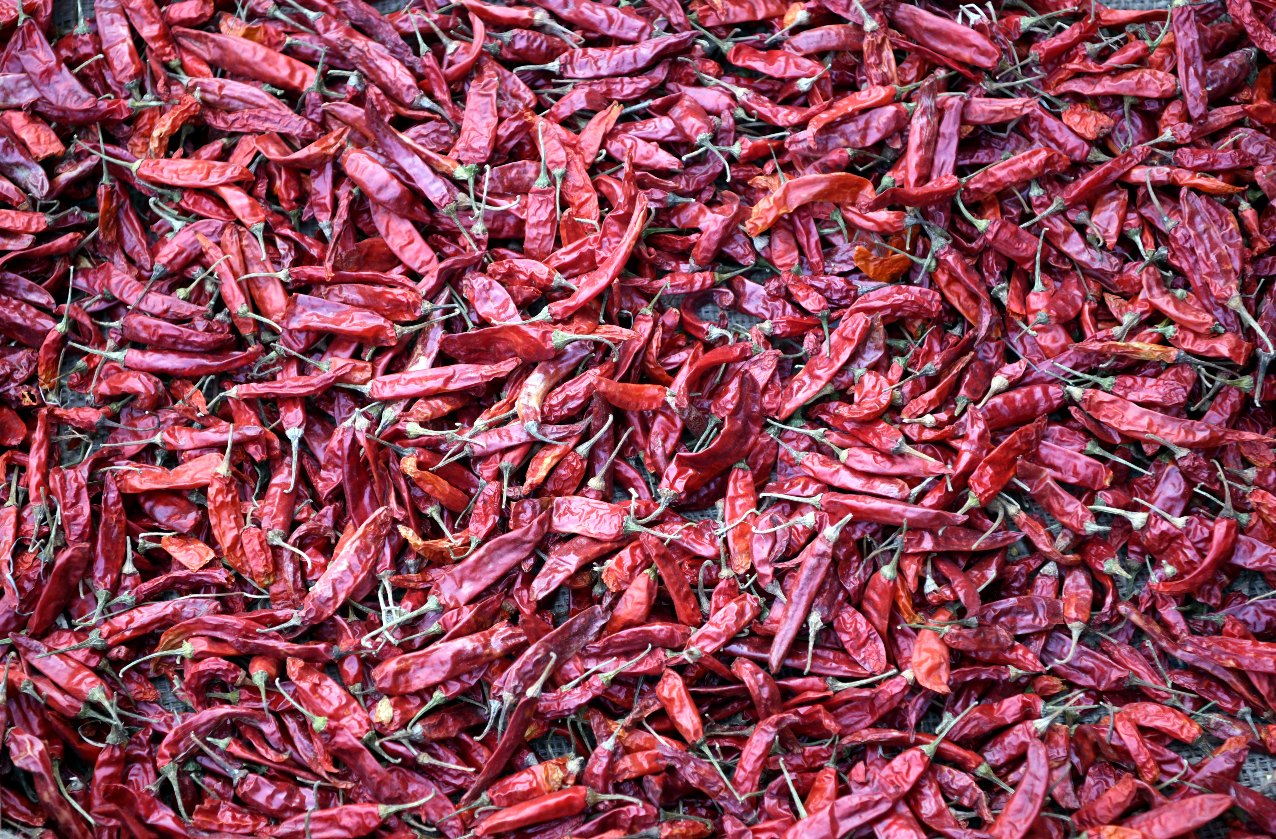
A few hundred years ago, Rajasthan was blissfully unaware of the South American fruit that would sooner or later come to dominate its cuisine. Mistaken for Indian pepper by the Italian explorer Christopher Columbus, the chilli was later introduced to Indian shores by the Portuguese at the turn of the 16th century. It is believed to have made its way up north, in all likelihood, with the Mughal-battling Marathas sometime in the 18th century. It turned out that Rajasthan’s dry, hot climate made it ideal for chilli cultivation, and within a short span of time, Mathania, a sandy little village north of Jodhpur became synonymous with a fiery long red chilli. Eaten freshly plucked, dried, whole, powdered or in paste form, these locally-grown chillies went on to effectively replace the indigenous peppercorn as the main source of heat, especially in desert foods.

As things stand today, it is a rare Rajasthani dish that will show up on the table without the Mathania mirch making its pungent presence felt. While it doesn’t quite set the Scoville scale afire, its powerful aroma imparts a distinct flavour and colour to the food, and you will notice its underlying sweetness garnishing several Marwari specialities like ker sangri and panchkuta. It is chopped up or used whole in gatta curry, kadhi or dal; or pulverised into the ubiquitous garlicky chutney often relished with butter-dripping bajra rotis. The chillies are also soaked in mustard oil while fresh, and consumed as a pickle. Above all, they are the defining ingredient that put the laal in that most famous of Rajasthani dishes, laal maas. Their use is said to have successfully masked the gamey taste of wild boar meat that, pre-hunting ban, was the preferred animal protein for this dish.

Eat Your Way to Better Health: While Mathania chillies may have elbowed pepper off the kitchen shelf in Rajasthan, they, like most chillies, mimic and provide similar benefits when used right. Several varieties are believed to boost the immune system, stimulate digestion, aid weight loss, and also ensure a healthy heart by thinning blood. The fiery ones often work as natural painkillers, stimulating the brain to release endorphins as a reflex action to the stinging.

Visual Treat: Mathania’s surroundings take on a brilliant red hue in February, when post-harvest, farmlands are carpeted with the moisture-heavy crop laid out to dry in the sun. A matchless visual treat that no self-respecting shutterbug should miss!
-
Connectivity:
-
Best Season:




